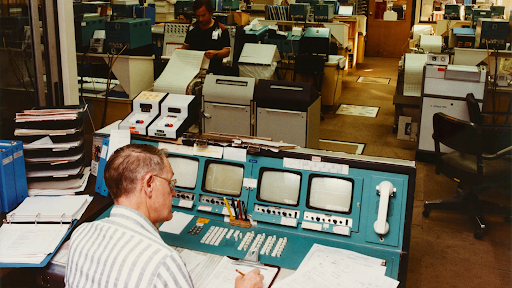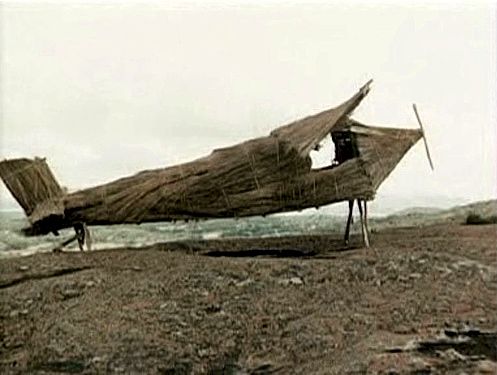Serving the worldwide community of radio-electronic homebrewers. Providing blog support to the SolderSmoke podcast: http://soldersmoke.com
Podcasting since 2005! Listen to Latest SolderSmoke
Wednesday, May 14, 2025
The Computer Hardware of the Apollo Program
Sunday, March 16, 2025
CuriousMarc Gets an Apollo DSKY Running. FPGA AGC Computer. Rope Memory.
Wednesday, December 20, 2023
Computer Science is DOOMED Because Humans are Bad at Programming (Video)
Sunday, October 29, 2023
Apollo Core Rope Memory -- CuriousMarc Takes it on (video)
Wednesday, October 4, 2023
Sunburst and Luminary -- A Poem about Transistors and ICs
Saturday, September 23, 2023
Sunburst and Luminary -- An Apollo Memoir by Don Eyles (video)
Saturday, August 19, 2023
Thursday, June 22, 2023
Another Model Rocket that Lands like SpaceX -- With a Great Description of the Flight Computer, Software, and Design
Monday, December 5, 2022
Cargo Culting, Appliances, and Homebrewing
Hack-A-Day had an interesting short piece on cargo culting and computer coding:
https://hackaday.com/2022/12/03/cargo-culting-and-buried-treasure/
Obviously there is a lot here that it applicable to ham radio. Feynman admonished us to try to deeply understand what we are doing. Do we risk cargo culting when we make use of gear that we really don't know anything about? Or when we use a chip that we don't really understand? (I'm looking at you, Si5351.)
I guess we can't really understand some of this stuff as deeply as Feynman would like -- can anyone describe the signal flow in a CPU chip? I don't think so. And Feynman would be the first to admit that no one really understands quantum mechanics. Still, as the author notes, we should be cognizant of the gaps in our understanding. For there dragons lie. Or opportunities to learn. The comments on the Hack-A-Day post are mostly pretty good.
Sunday, August 7, 2022
Model Rocket Lands Like a SpaceX Falcon 9
https://soldersmoke.blogspot.com/2018/06/rockets-and-microcontroller-videos.html
He has finally achieved the very difficult goal of landing his model rocket just as SpaceX does with its Falcon 9. Check out the video above.
It was also very cool to see him building the rocket, using a very wide range of electronic, software and metalwork skills.
Hack-A-Day has a good post explaining how he did this:
https://hackaday.com/2022/08/05/bps-space-succesfully-lands-a-model-rocket/
Congratulations to BPS.space!
Thursday, July 28, 2022
Software, Hardware, and Rockets -- T-Zero Systems (videos)
Friday, June 17, 2022
SolderSmoke Podcast #238 -- SolderSmoke Shack South, Cycle 25, Chiquita Banana Radio, RCA, HQ-100, Mate Mighty Midget, Sony SWL RX , Mailbag
SolderSmoke Podcast #238 is available: http://soldersmoke.com/soldersmoke238.mp3
TRAVELOGUE:
Cathartic decluttering: Bill preparing for future winter travel to Dominican Republic. Will build SolderSmoke Shack South. Dividing everything up: Rigs, parts, tools, supplies, antennas, test gear. Everything.
PETE'S BENCH:
Saturday, May 28, 2022
"Experimental Methods in RF Design" LADPAC Software Available FREE!
We've frequently said that is pays to check the W7ZOI web site. Tony G4WIF did just that and pointed us in that direction, noting that the LADPAC "Ladder Package" software is now available for download from that site.
Homebrewers will really want to have that package on their computers. There are all kinds of useful programs in that package: software for designing crystal filters and feedback amplifiers, a program that allows you to think systematically about receiver gain distribution and dynamic range, and many other useful things.
You can get the program here:
http://w7zoi.net/emerrata.html
Also on Wes's site is this May 22, 2022 picture of Farhan VU2ESE with EMRFD co-author Bob Larkin, W7PUA.
Thanks Wes!
Friday, March 18, 2022
Help! Can You Write the Software to Control the MAX2870 Board?
Thursday, January 6, 2022
Roy Lewallen W7EL Gives Us All EZNEC for FREE! Thanks Roy! (Video)
Saturday, January 1, 2022
An Interview with Paul Lutus (Audio)
Sunday, December 12, 2021
Hack-a-Day: Has DIY become Click-and-Buy?
https://hackaday.com/2021/12/11/has-diy-become-click-and-buy/
Monday, August 2, 2021
Mythbuster Video #12 -- Bandpass Filters
Friday, June 12, 2020
Software for Computer Interface with NanoVNA: NanoVNASaver
Saturday, April 13, 2019
Digital Engineering vs. Analog Engineering
In a book review Thompson makes this observation about the digital-analog divide:
One difference might be that human beings can deal with ambiguity, and computers really can't. If you've done any Python [coding], you make the tiniest mistake, and everything stops immediately. That’s what makes it different even from other forms of engineering. When you are trying to fix a car, if you fail to tighten a bolt on one wheel as tight as it should be, the entire car doesn't stop working. But with code, an entire app, an entire website can go down from the misplacement of a single bracket. I think that's the one thing that sometimes scares writers away, because they are more accustomed to working with ambiguity.
https://arstechnica.com/gadgets/2019/04/how-the-new-art-form-of-coding-came-to-shape-our-modern-world/
I am definitely more accustomed to working with ambiguity. All of my rigs are filled with ambiguity.












